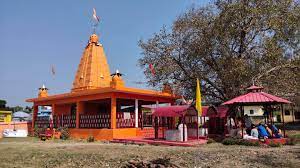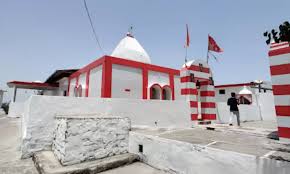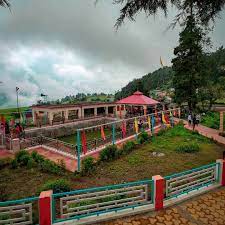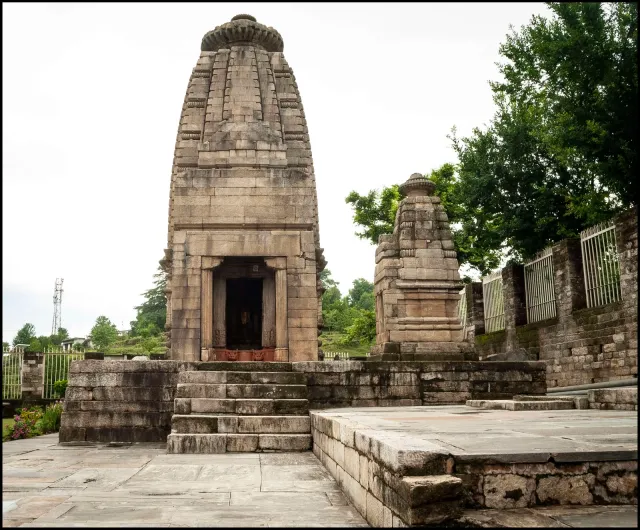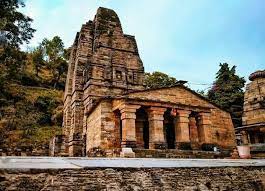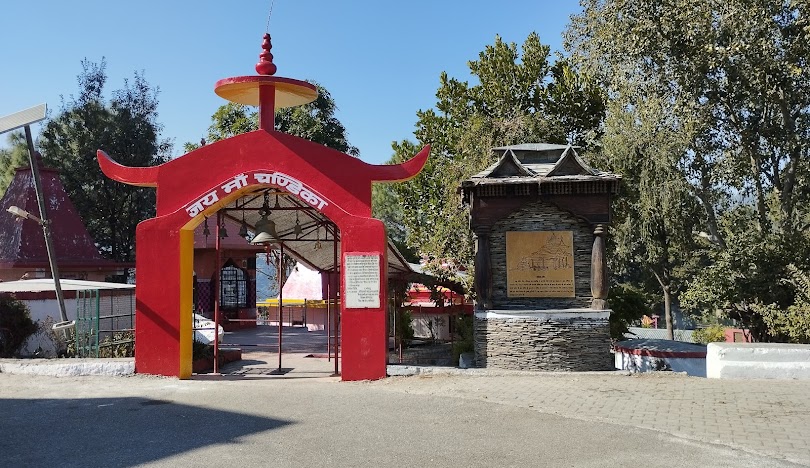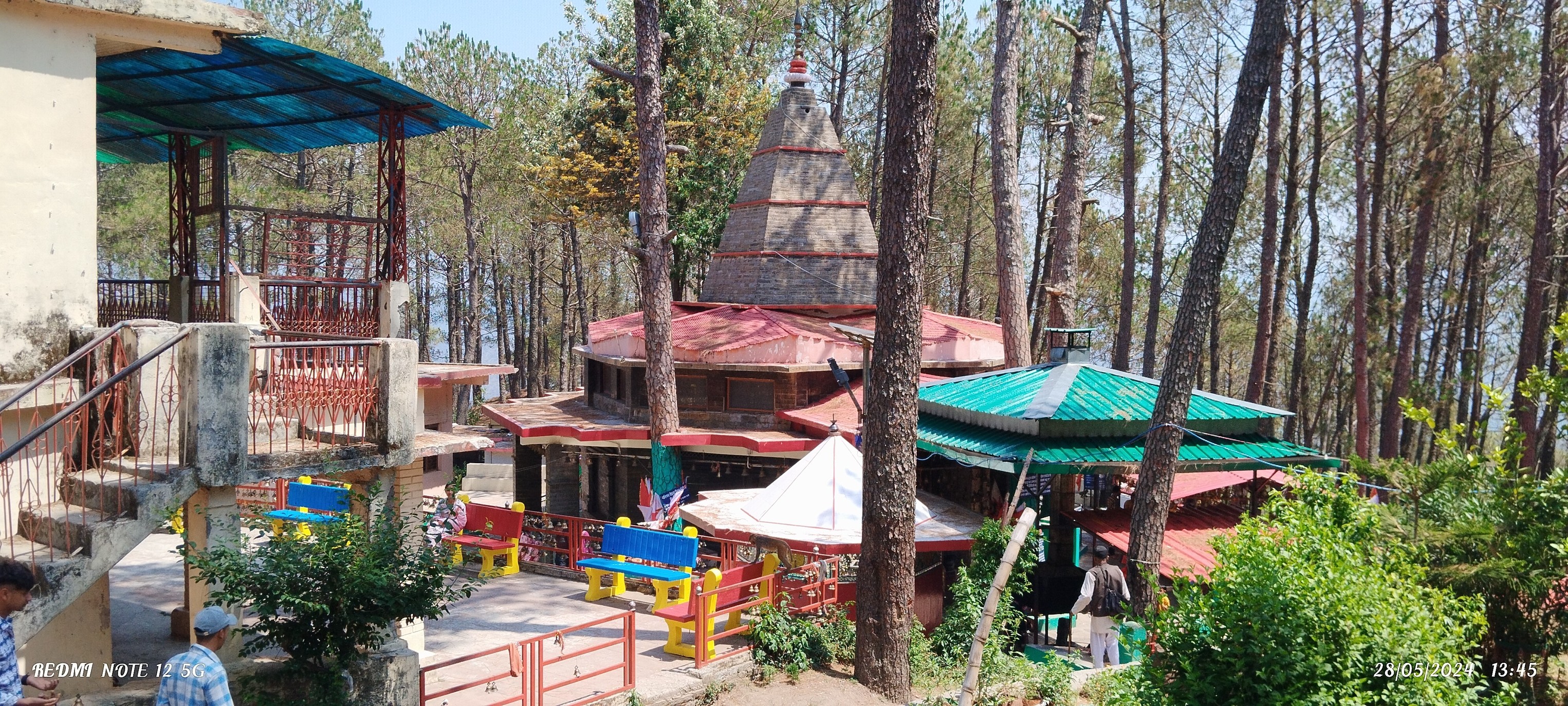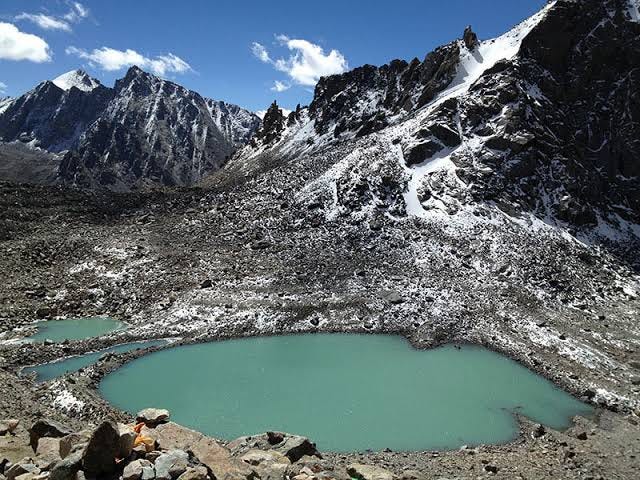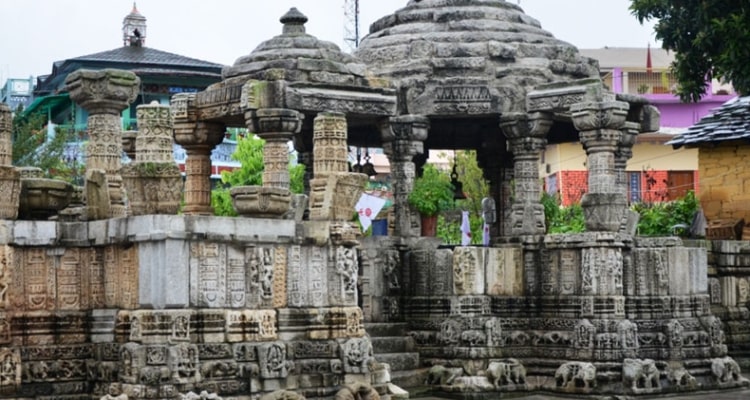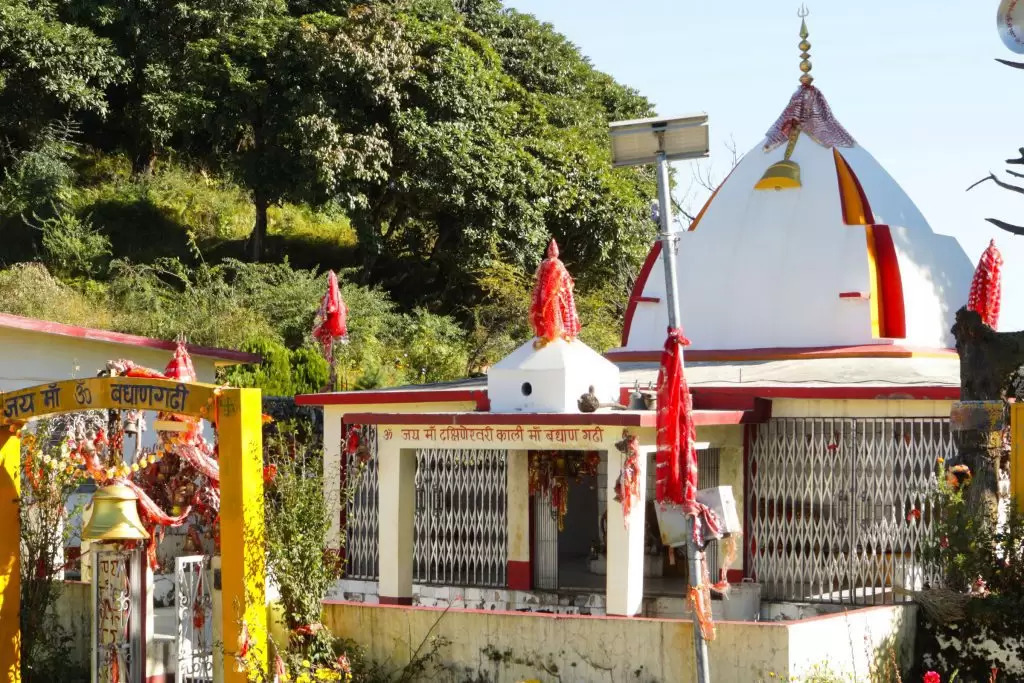Chaukhutia is an inconspicuous town nestled in the Kumaon hills, named after "chau-khut," or the four directions, with each road descending somewhere holy or steeped in tale. There is one avenue all the way down to the temple that doesn't immediately take hold of interest; yet when you arrive, you wish you had found it quicker. This temple is the Rudreshwar Mahadev, situated near the राम गंगा (Ram Ganga, in which the glide of time seems to slow down in sync with the rhythmic waft of prayer.
A Peaceful Retreat by the Riverbank
You arrive by using the avenue, the course weaving through oak, pine, and fields in which maize rustles. The temple stands not grand, but gentle, white stone glowing among green. It is believed that Lord Rama once worshipped here, and the river earned its name because of that moment. Inside the hall, you turn and see the Ram Ganga flowing below, like a story in motion.
The citizens speak concerning the temple with an analytical recognition, viewing its life as part of the whole cultural history, as opposed to an exhibition of enthusiasm. The शिवलिंग (Shivlinga) lies in dim light, with moss amassing in numerous crevices, and the prayers seemingly seep through the stone with each whispered repetition of "ॐ नमः शिवाय (Om Namah Shivaya)."
Older Than We Are Are the Walls
Nobody knows for sure how old the temple is. People think it has been here longer than anybody knows, its age chiseled in the wall-weathered stone. One of the oldest Shiva temples in Kumaon, pilgrims still travel the distance for blessings.
Inside, you notice marks in the stone where centuries of visitors have leaned, cupped their hands, and offered water. Small bells hang quietly, resonating only when touched, their sound carrying longer than you expect.
The Ganga Becomes Prayer
The river is never far. You can almost hear it through the temple’s walls. It curls around the base of the valley, clear as memory, carrying stories of राम (Ram) and pilgrims alike. From the prayer platform, the water looks both ancient and always new.
There is a place outside where devotees dip their feet after offering पूजा (puja). There are no crowds, just the current, and that one straight moment of clarity when the river catches the sun.
A Blend of Everyday and Sacred
For maximum, Rudreshwar is not a primary shrine with massive schedules or announcements. It is an area you come upon, as faithful as the wooded area that hides it. On शिवरात्रि (Shivratri) and for the duration of the month of श्रावण (Shravan), the temple draws more human beings, and you also feel the power shift. Lamps are lit, prayers echo, and the temple appears to open its heart. But on most days, traffic is low, and the region breathes quietly.
You are just as likely to meet a villager sitting in meditation as a traveller curious about history or nature. Both find a place here.
Quiet Remains, Loud in Memory
- What stays with you are not legends alone, but moments, small and steady:
- The cool touch of stone beneath your hand as you bow
- A patch of sunlight warming the temple wall
- The murmur of the river when all the prayers fall silent
- The hush after a bell rings once, echoing softly in your chest
- These are not just sights. They become part of how you carry yourself afterward.
Why It Stands Apart
- Uttarakhand has many temples, but Rudreshwar holds its own space.
- It was not built by kings, but shaped by centuries of quiet faith.
- It is not loud or crowded, but radiant with carvings and flowing water.
- It ties mythology and the river together in the simplest way.
- It offers stillness in a land that often rushes pilgrims along.
- That is its quiet strength.
Notes for Visiting
Where it is: About 21 km from Chaukhutia, at the Bhikiasain to Chaukhutia street, right via the Ram Ganga
How to reach: Accessible by road; the closest railway station is Kathgodam, and the closest airport is Pantnagar.
Best time: Mornings feel the most sacred, with sunlight streaming through trees. Winters convey frost, summers carry a gentle breeze. Shivratri is when the temple is at its most alive with a birthday party.
Standing Where Belief and River Flow Converge
You do not come here for grandeur. You come for the quiet that fills your chest when you pause and listen. The temple is not large. It does not need to be. It does not need to be. It maintains watch over the river, the forest, and the pilgrims who pass through.
And while you go away, you convey the whisper of the water, the chilliness of the stone, and that one second where the arena feels each small and ad infinitum full. That is Rudreshwar Mahadev.

